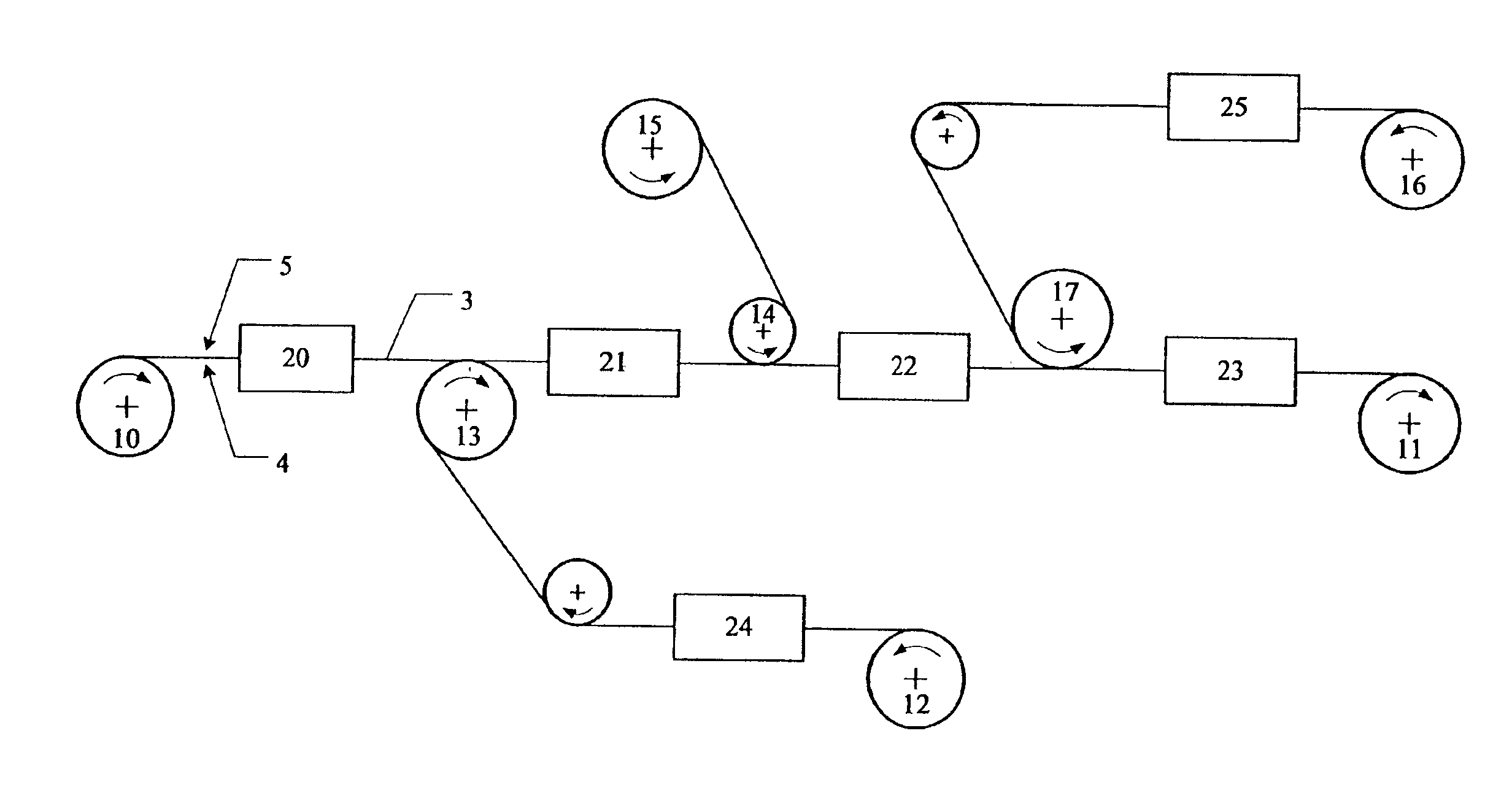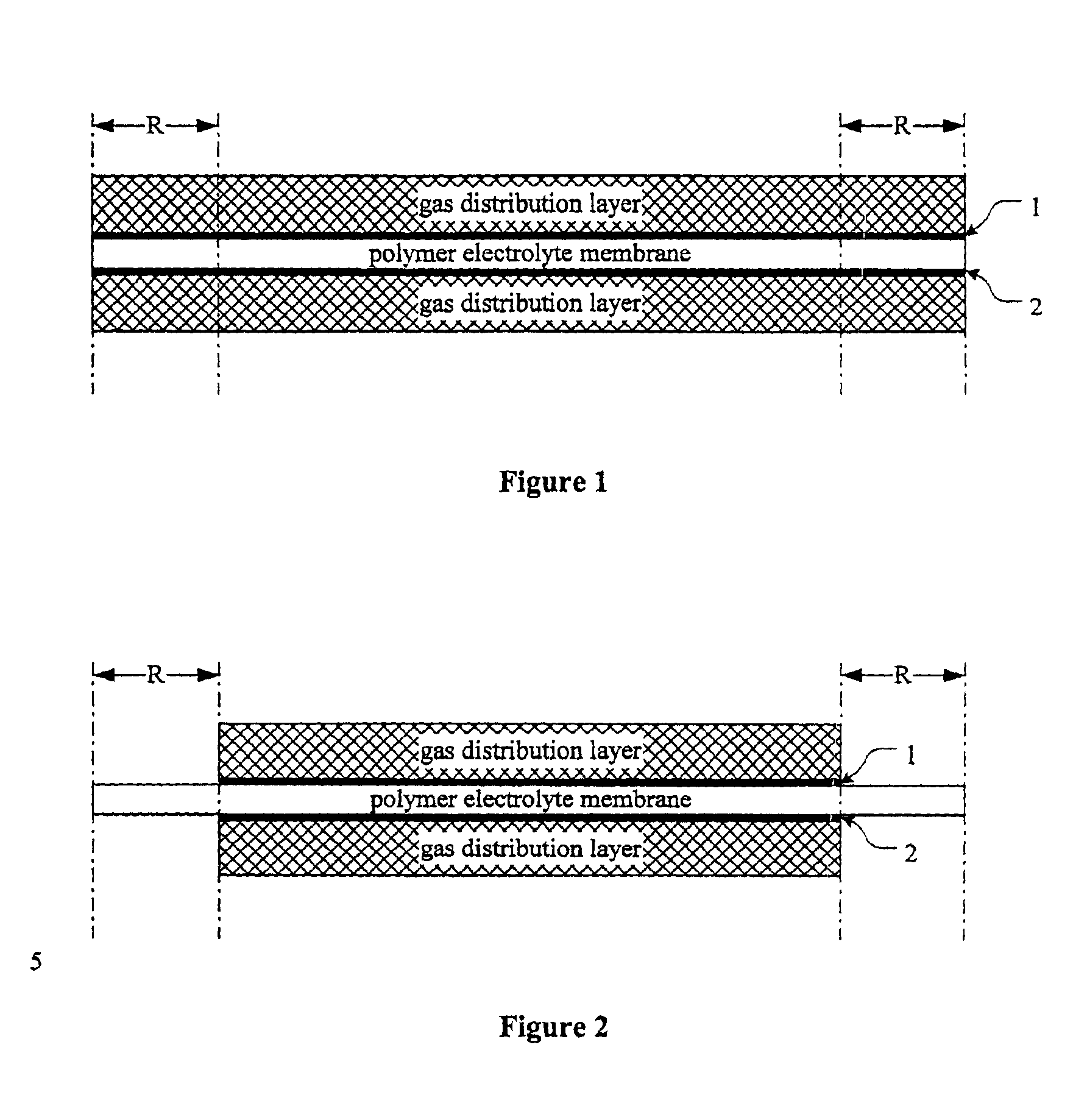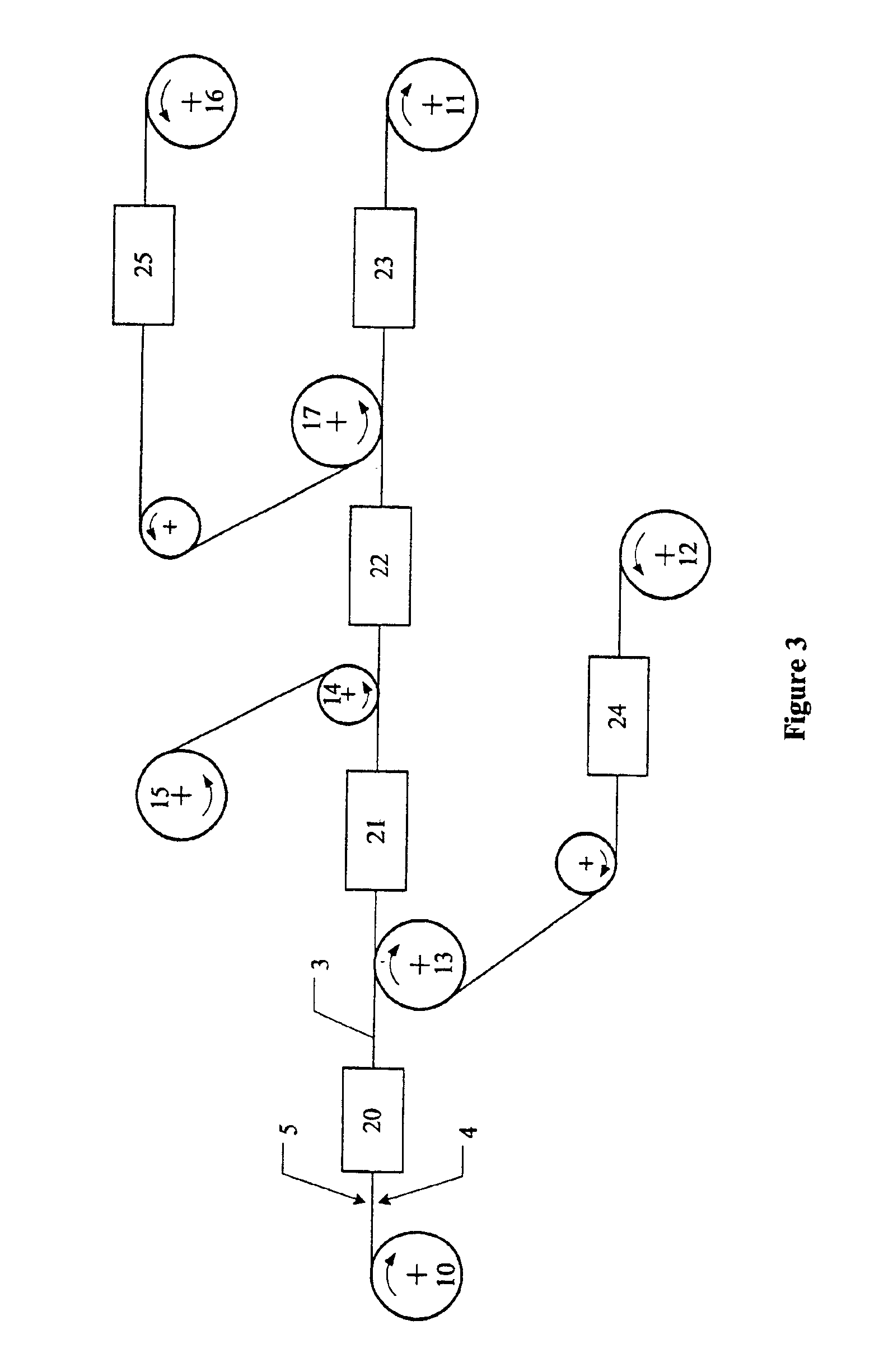Process for producing a membrane electrode assembly for fuel cells
a fuel cell and membrane electrode technology, applied in the direction of fuel cells, coatings, electrochemical generators, etc., can solve the problem that the process does not provide complete membrane electrode assemblies, and achieve the effect of improving electrical performan
- Summary
- Abstract
- Description
- Claims
- Application Information
AI Technical Summary
Benefits of technology
Problems solved by technology
Method used
Image
Examples
example 1
[0073]Catalyst inks with the following compositions were prepared in order to make up an membrane electrode assembly in accordance with the suggested process:
[0074]
Composition of the cathode ink:13.0gPt supported catalyst (40 wt. % Pt on carbon black, Dmc2)41.0gNafion ® solution (10 wt. % in water)36.0gWater (fully deionised)10.0gDipropylene glycol100.0gComposition of the anode ink:11.0gPtRu supported catalyst (40 wt. % PtRu on carbon black:26.4 wt. % Pt, 13.6 wt. % Ru; catalyst according toU.S. Pat. No. 6,007,934)36.0gNafion ® solution (10 wt. % in dipropylene glycol (PG))11gWater (fully deionised)42.0gDipropylene glycol100.0g
[0075]The cathode ink mentioned above contains predominantly water as solvent, whereas the anode ink contains substantially dipropylene glycol as solvent.
[0076]The Nafion solution (Nafion: tetrafluoroethylene / fluorovinylether copolymer with sulfonic acid groups in the proton form) in dipropylene glycol was prepared from a purchased Nafion solution in low-boili...
example 2
[0079]In this example, the cathode ink was made up substantially with organic solvents (dipropylene glycol) and the anode ink was made up substantially with water. The composition of the inks is given below:
[0080]
Composition of the cathode ink:11.0gPt supported catalyst (40 wt. % Pt on carbon black, Degussa-Hüls)36.0gNafion ® solution (10 wt. % in dipropylene glycol (PG)11gWater (fully deionised)42.0gDipropylene glycol100.0gComposition of the anode ink:11.0gPtRu supported catalyst (40 wt. % PtRu on carbon black:26.4 wt. % Pt,13.6 wt. % Ru; catalyst according to U.S. Pat. No. 6,007,934)41.0gNafion ® solution (10 wt. % in water)36.0gWater (fully deionised)10.0gDipropylene glycol100.0g
[0081]A 30 μm thick polymer electrolyte membrane, which was supported on one surface by a laminated film of polyester, was first coated on the readily accessible surface with the cathode ink. A water repellent carbon fiber paper (Toray TGPH-060) was laid on the still moist cathode layer. Then the composit...
PUM
| Property | Measurement | Unit |
|---|---|---|
| temperature | aaaaa | aaaaa |
| thickness | aaaaa | aaaaa |
| thickness | aaaaa | aaaaa |
Abstract
Description
Claims
Application Information
 Login to View More
Login to View More - R&D
- Intellectual Property
- Life Sciences
- Materials
- Tech Scout
- Unparalleled Data Quality
- Higher Quality Content
- 60% Fewer Hallucinations
Browse by: Latest US Patents, China's latest patents, Technical Efficacy Thesaurus, Application Domain, Technology Topic, Popular Technical Reports.
© 2025 PatSnap. All rights reserved.Legal|Privacy policy|Modern Slavery Act Transparency Statement|Sitemap|About US| Contact US: help@patsnap.com



